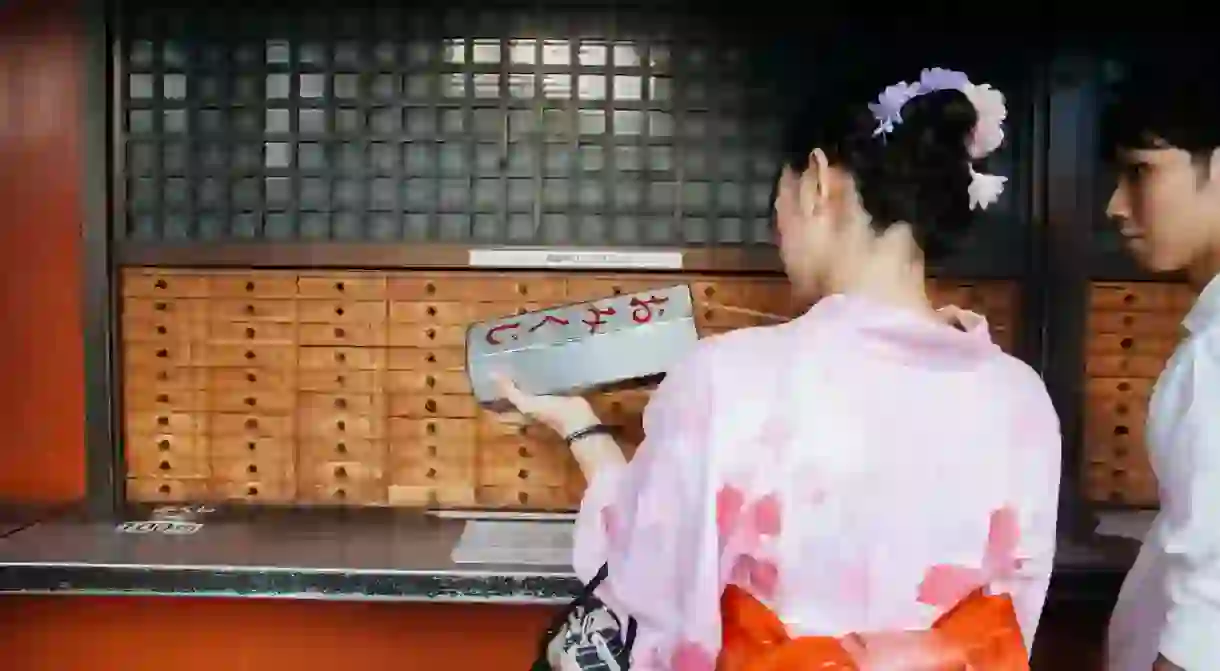Senso-Ji: The Temple Devoted to Mercy

In the heart of the traditional suburb of Asakusa sits the Buddhist Senso-ji Temple, one of the city’s oldest landmarks and a popular destination for those wishing to learn more about the country’s rich Buddhist history. A visit to Tokyo, one of the most spiritual cities in the world, isn’t complete without popping by Senso-ji.

An early incarnation of the temple was first built in 628AD by two fishermen brothers Hinokuma Hamanari and Hinokuma Takenari. While working the pair found statue of the Kannon (Godess of Mercy) in the Sumida River. After bringing it back to their village, the town’s chief and devout Buddhist, Hajino Nakamoto, was so struck by the holiness of the figure, he remodelled his own house so the people of the village could come and worship Kannon. The official temple was founded in 645 AD, making it the oldest temple in Tokyo.


In Japan, Kannon is considered the goddess of mercy and pets. What makes her so special to the people of Japan is the fact that she’s Bodhisattva, which means she is dedicated to helping all those who suffer in this world. To do this duty she has sacrificed her enlightenment to give herself to the people of Japan. Buddhism and the Shinto are the nation’s most commonly followed spiritual paths in Japan. The Shinto religion is a peaceful one, built on rituals connecting present-day Japan with its richly ancient past.
With over half a millennium of history within its walls, Senso-ji was born before Tokyo was even considered a city. In fact, the existence of the temple was the reason Asakusa even become a town. As the legend goes, Ieyasu, who was a shogun (military leader) and the creator of the great city of Edo found power in the temple’s symbolism and made it a hub during his reign.

Even though today the city perhaps isn’t as religious as it once was in a traditional sense, Senso-ji is still home to some of the city’s biggest religious and social events including the Sanja Matsuri in May – the annual festival of the Asakusa Shrine. In August, the temple grounds hosts the Asakusa Samba Carnival and the Hagoita-ichi (Hagoita Market). Here you can buy decorated wooden paddles used to play the traditional game of hanetsuki, which is like a Japanese form of badminton.

A large shopping street called Nakamise leads from the temple’s first outer gate up to the doors of the temple. Dotted with traditional looking stores and food stands, Nakamise is where visitors can try local snacks like mocha (rice cake) and pick up typical Japanese souvenirs like folding fans, good luck charms and yukatas (summer kimonos).

Though it may seem a little like a tourist trap, Nakamise Dori (translated as inside street) has a history that goes all the way back to the 18th century Edo period. It turns out Edoites like to buy souvenirs and snacks as much as us 21st century folk! Full of history, Senso-ji truly is Tokyo’s spiritual heart.














